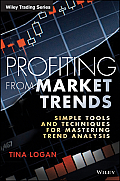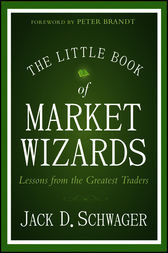- They have the resilience to come back from early losses and account blow ups.

- They focus on what really matters in trading success.
- They have developed a trading method that fits their own personality.
- They trade with an edge.
- The harder they work at trading the luckier they get.
- They do the homework to develop a methodology through researching ideas.
- The principles they use in their trading models are simple.
- They have mental and emotional control is key while winning or losing.
- They manage the risk to avoid failure and pain.
- They have the discipline to follow their trading plan. (more…)
Archives of “Investment” tag
rss10 Things that Great Traders have Declared Independence From –
- Great traders do not have to be right about any one trade, their success is based on winning more than they lose on a large amount of trades.
- Great traders do not need trade ideas from other traders, they trade a system and method independent of others opinions.
- The best traders are independent of holding on to losing trades stubbornly trying to prove they are right, they cut losses.
- The best traders are not prisoners of their emotions they can make clear headed decisions due to trading like it is a business not an ego trip.
- Rich traders became rich because they had systems that allowed winning trades to be free to run as far as they would go. They are independent of price targets.
- Rich traders trade independently from BLUE CHANNEL sentiment.
- Great traders trade charts independently of market sentiment.
- Great traders trade independently of talking heads on financial television.
- Winning traders are independent of market gurus they have proven systems and methods.
- Great traders are free from the risk of ruin because they never risk more than 1% to 2% of their total capital on any one trade.
Why Traders Keep Losing Money
Profiting from Market Trends- Tina Logan (Book Review )
When the market accommodates, trend trading can be highly lucrative. The trick, of course, is to divine the market’s often fickle moods. Tina Logan sets out to help the trader identify and exploit the “good times” in Profiting from Market Trends: Simple Tools and Techniques for Mastering Trend Analysis(Wiley, 2014).
The book is divided into two parts. The first, trend development, has chapters on trend direction, trend duration, trend interruptions, early trend reversal warnings, and later trend reversal warnings. The second part, putting trend analysis to work, deals with the broad market, bull markets, bear markets, and monitoring the market trends; it also includes a case study of the current bull market. Throughout, the text is illustrated with TC2000 (Worden Brothers) charts.
Let’s look at the chapter on early trend reversal warnings to get a sense of the book as a whole. Logan summarizes the warnings in a table. In an uptrend they are: a bearish climax move such as a key reversal or an exhaustion gap, bearish divergence, failure to break a prior peak, change of slope—rising trendline, break of tight rising trendline, approaching a strong ceiling, and bearish candlestick reversal pattern. The warnings in a downtrend are the reverse. (more…)
Jim Chanos on Taking Risks Early
I took the biggest risk of my life at age 33 and I was terrified.
With a wife and two kids, a mortgage and almost nothing in the bank, I left my management position at a broker-dealer and dropped my Series 7. I essentially bolted from the business I had been in for a decade, giving up my license and my livelihood on a bet that I could be doing better for my clients as their advisor and make a lot more money once I was happy and the pit in my stomach dissolved.
And thank god it worked. I’m not sure what I would have done if it hadn’t.
In hindsight, I wouldn’t change much about my timing and all of what I had gone through to get things things right in the end – it was the real-world education of a lifetime. However, if I could change one thing, maybe it would be not waiting so long and staying with a profession that I truly hated. It probably would have been a lot less stressful had I pulled the ripcord in my twenties, before the babies and the bills.
Oh well.
Jim Chanos, one of the most successful investors of all time, began his career on The Street as a banker and then a brokerage firm analyst. The conflicts inherent in those roles drove him to seek out something more and that’s when he became a hedge fund manager. You see, Chanos was interested in the pursuit of truth and, what’s more, a way to make money from the discovery of truth before others could find it. The name of his firm, Kynikos Associates comes from the Greek word for cynic (and it can also mean ‘dog-like’, another apt metaphor for a fund that relentlessly hunts down meaning in the public information that others cannot see).
Here the legendary manager offers some advice to young professionals about timing their risk-taking: (more…)
5 Steps To Becoming a Long-Term Success in Trading
1. Make Rational, Not Emotional, Decisions — Do you have a plan to enter and exit your trades? Or do you just wing it? If you have a plan, write down your rules, and make sure that you trade your plan. If you don’t, or can’t, follow your rules, hire someone who can.
2. Respect Risk — Stock Market is not going anywhere. If you risk too much, your emotions will take over, and you will likely go broke. Always know where you are going to exit before you enter and how much you are going to risk if wrong.,
3. Don’t Judge Your Success One Trade at a Time — Losing money is part of trading. It happens to everyone. Once you learn to expect that will happen, you can plan for it and get past normal pitfalls, such as giving up on your system after a few losing trades.
4. Think like a winner — Remember that winning starts within. How you think is everything.,
5. Ask For Help — Making money on Wall Street is simple, but it is definitely not easy. Don’t let your ego get in your way of making money. Most people have a hard time asking for help. That’s just one reason why most people lose money on Stock Market . You don’t have to go it alone. Find someone you trust and are comfortable with, and don’t be afraid to ask for help.
19 Great Quotes From – “Hedge Fund Market Wizards”
 1. As long as no one cares about it, there is no trend. Would you be short Nasdaq in 1999? You can’t be short just because you think fundamentally something is overpriced.
1. As long as no one cares about it, there is no trend. Would you be short Nasdaq in 1999? You can’t be short just because you think fundamentally something is overpriced.
2. All markets look liquid during the bubble (massive uptrend), but it’s the liquidity after the bubble ends that matters.
3. Markets tend to overdiscount the uncertainty related to identified risks. Conversely, markets tend to underdiscount risks that have not yet been expressly identified. Whenever the market is pointing at something and saying this is a risk to be concerned about, in my experience, most of the time, the risk ends up being not as bad as the market anticipated.
4. The low-quality names tend to outperform early in the cycle, and the high-quality names tend to outperform toward the end of the cycle.
5. Traders focus almost entirely on where to enter a trade. In reality, the entry size is often more important than the entry price because if the size is too large, a trader will be more likely to exit a good trade on a meaningless adverse price move. The larger the position, the greater the danger that trading decisions will be driven by fear rather than by judgment and experience.
6. Virtually all traders experience periods when they are out of sync with the markets. When you are in a losing streak, you can’t turn the situation around by trying harder. When trading is going badly, Clark’s advice is to get out of everything and take a holiday. Liquidating positions will allow you to regain objectivity.
7. Staring at the screen all day is counterproductive. He believes that watching every tick will lead to both selling good positions prematurely and overtrading. He advises traders to find something else (preferably productive) to occupy part of their time to avoid the pitfalls of watching the market too closely.
8. When markets are trending up strongly, and there is bad news, the bad news counts for nothing. But if there is a break that reminds people what it is like to lose money in equities, then suddenly the buying is not mindless anymore. People start looking at the fundamentals, and in this case I knew the fundamentals were very ugly indeed.
9. Buying low-beta stocks is a common mistake investors make. Why would you ever want to own boring stocks? If the market goes down 40 percent for macro reasons, they’ll go down 20 percent. Wouldn’t you just rather own cash? And if the market goes up 50 percent, the boring stocks will go up only 10 percent. You have negatively asymmetric returns.
10. If a stock is extremely oversold—say, the RSI is at a three-year low—it will get me to take a closer look at it.8 Normally, if a stock is that brutalized, it means that whatever is killing it is probably already in the price. RSI doesn’t work as an overbought indicator because stocks can remain overbought for a very long time. But a stock being extremely oversold is usually an acute phenomenon that lasts for only a few weeks. (more…)
Avoid the pitfalls of ‘over trading’ and ‘under trading.’
* There are basically two types of over trading. Trading too often and trading too many shares/contracts.
* Remember that there really is no good reason to trade constantly, since extreme over-trading creates stress, produces high commissions and can often lead to more losses.
* Market forces do not last forever and time has shown various examples of the law of gravity in the trading market- that whatever comes up must go down. – and vice versa.
* Instead of grabbing every opportunity that comes along (or thinking that it is an opportunity) make sure each trade setup meets the criteria of your trading plan, don’t be over confident or scared of making trades.
* Utilizing a risk calculator to determine the appropriate position size before you enter a trade can help you determine how many shares/contracts you initially buy. You can start off with a small position and add as the trade continues in your favor. It relieves stress to know that the amount at risk for each position you hold is well proportioned to the size of your entire account and this is great asset management.
* Whenever you feel that you did not stick to your trading plan and made a mistake, quickly learn from that and let it go.
12 Things Traders Should Not Do at all
- A big ego that wants to prove they are right by stubbornly staying with a position that is wrong becasue they want to be right eventually so bad.

- A trader that want to prove he is a hot shot by trading big position sizes especially in options or futures.
- Not wanting to take a stop loss and instead just hope the trade comes back.
- Trading with emotions instead of a trading plan can get very expensive very fast.
- Being a bear in a bull market.
- Being a bull in a bear market.
- Being overly eager to start trading with real money before fully testing out a trading system.
- Trading without doing adequate homework on how to win.
- Dollar cost averaging down in a trade is many time expensive to fight that trend.
- Ignoring the charts and just trading your opinion.
- Ignoring the probability of the risk of ruin based on your current position sizing.
- Not really understanding the true danger of ‘Black Swan’ and ‘Fat Tail’ events.
5 Wisdom Thoughts For Traders
- Learn to think in probabilities. In some types of analysis, it’s easy to forget that any conclusion is only valid within the range of statistical probability. For instance, if we do valuation work, we might think that is the value, and just wait for price to converge. Technical tools make us face the reality in the market, and that is that markets are not very predictable, and are only predictable within a range of probabilities.
- Learn to cut your losses. It’s impossible to say what is the “most important” thing in trading or investing, but this certainly is a candidate. Many methodologies do not have any way of telling you when you’re wrong. For instance, if price is under your valuation and it goes down, the logical course of action is to buy more. At some point, declining prices carry a message, and technical tools can force us to respect that message.
- Understand how a market has been trending. This can be as easy as squinting at a price chart and see if it “goes up, down, or is pretty flat”. You don’t need moving averages or indicators to do this–simple visual inspection is enough. However (and this is a huge “however”), do not assume that a market that has been trending in the past will continue to trend in the future. That requires a few more steps.
- Understand when the rubber band might be stretched a bit too far. Markets tend to move in waves: directional movements will alternate with pullbacks or flat periods. Sometimes, a market goes a bit too far, too fast and can be set to snap back. Buying a market (or shorting) when it is overextended is chasing, and can open the trader up to some stunning losses. There are simple technical tools that will highlight when markets are perhaps a bit overextended, and can tell us to wait for more favorable conditions.
- Enforce discipline. Markets are random, but you cannot be random. The only way to get consistent results out of difficult and competitive markets is to always act with consistency and discipline. Technical methodologies encourage us to face market conditions and to immediately evaluate the results of our actions. There is no better way to drive toward consistent behavior.


